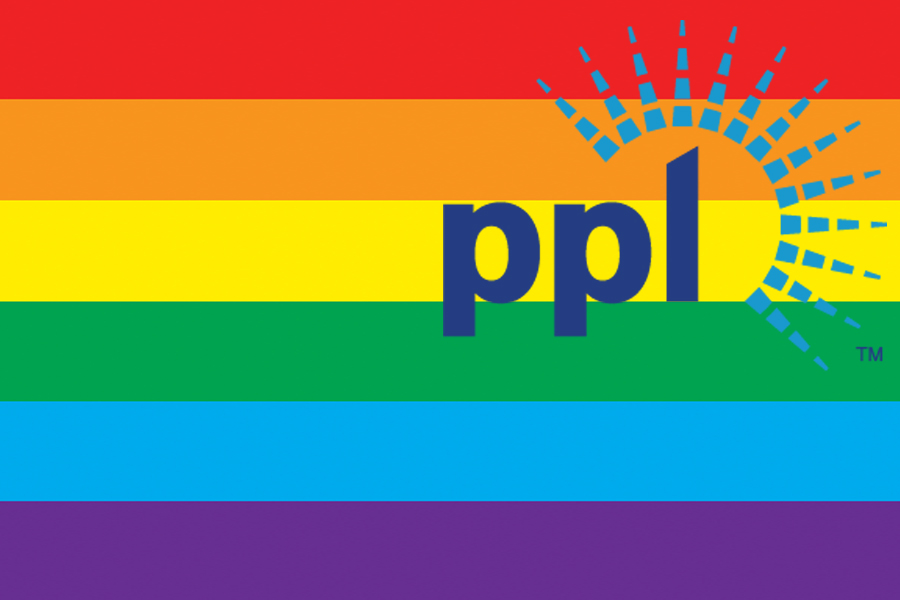Since the 1920s, PPL Electric Utilities has flown four flags: for the United States, Pennsylvania, Allentown and the company. But after the June 12 mass shooting at an LGBT club in Orlando, members of Fuse, an LGBT employee-resource group at PPL, and others also wanted to fly the rainbow flag.
“We had a little resistance,” said Cynthia Gold, director of corporate human resources for PPL. “The thought was, We’ve never flown another flag. Well, just because we never have, doesn’t mean that we shouldn’t.”
She added, “We built a business case for why it matters. And for the first time ever, we flew a different flag.”
The June story of PPL hanging the rainbow flag made it into Lehigh Valley news media and onto the Facebook page of the Bradbury-Sullivan LGBT Community Center in Allentown.
“Within 30 minutes, we had 3,000 hits and 200 positive comments,” Gold said. “It not only impacted us. It impacted our business and our customers.”
She shared that story Oct. 18 as part of a panel on “The Business Value of Diversity and Inclusion,” presented by the Center City Proprietors Association and PHL Diversity.
More than 50 people attended the event at the National Liberty Museum in Old City. Various chambers of commerce from Philadelphia participated, including the African American Chamber, Asian American Chamber, Hispanic Chamber and the Independence Business Alliance.
Gold spoke alongside Jamar J. L. Johnson, manager of HR Systems at Comcast; Elizabeth A. Morrison, global director of workforce diversity and inclusion at Campbell Soup Company; and Rosa Torres, an IT senior business consultant at Aramark and part of the leadership at the company’s Impacto Hispanic Employee Resource Group.
Greg DeShields, executive director of PHL Diversity at the Philadelphia Convention and Visitors Bureau, moderated.
The panelists offered tips for starting and maintaining employee-resource groups, or employee-led organizations that focus on specific demographics or interests.
PPL has nine of these groups, Comcast has eight, Campbell has nine and Aramark has seven. Groups for women and African-Americans were often the first formed.
When Gold started working with employee-resource groups, she said many saw them more as social clubs and she wanted to emphasize the potential to drive business value. Members of PPL employee resource groups have since become active in science, technology, engineering and math programs at local schools to help engage with a diverse pipeline of talent. They’re also helping the company redesign its customer portal to best serve all users.
Other panelists noted the importance of having goals and accountability in the employee-resource groups. Johnson said Comcast has about three executive champions for each of its groups. Torres said Aramark’s goals for the groups include attracting a diverse workforce, assembling in the workplace and activating the marketplace.
“You need to treat an ERG like a business venture,” Torres said. “You need to have your business case. You need to have the right resources, the right funding.”
Aramark has 56,000 Latino employees. Torres said Impacto has collaborated with culinary and marketing teams in the company to provide Latin dishes across the nation, which was a way to add value to the business.
Impacto, started a year-and-a-half ago, has more than 300 members. About 70 percent are non-Hispanic. The idea is to foster mentorships across demographics. Morrison said a similar mentality exists behind the strategy of recruiting men to join Women of Campbell.
Once an employee-resource group gets started, the panelists said it’s important to have a strategy in place to maintain it.
“It’s never too early to start succession planning and to start mentoring those people that will step up to lead the ERG,” Torres said. “Mentor several people because you never know who leaves the organization or who’s no longer interested.”

